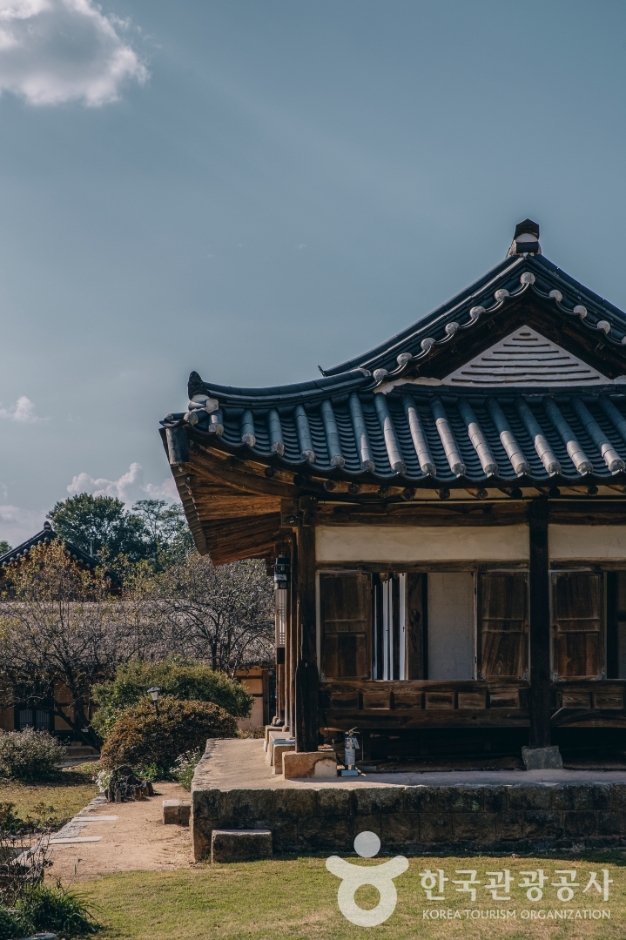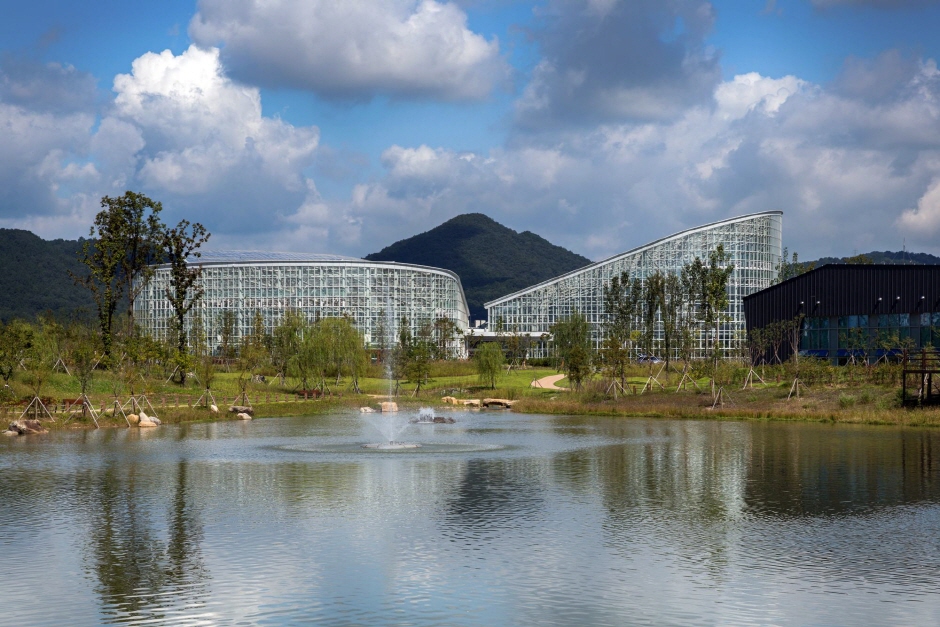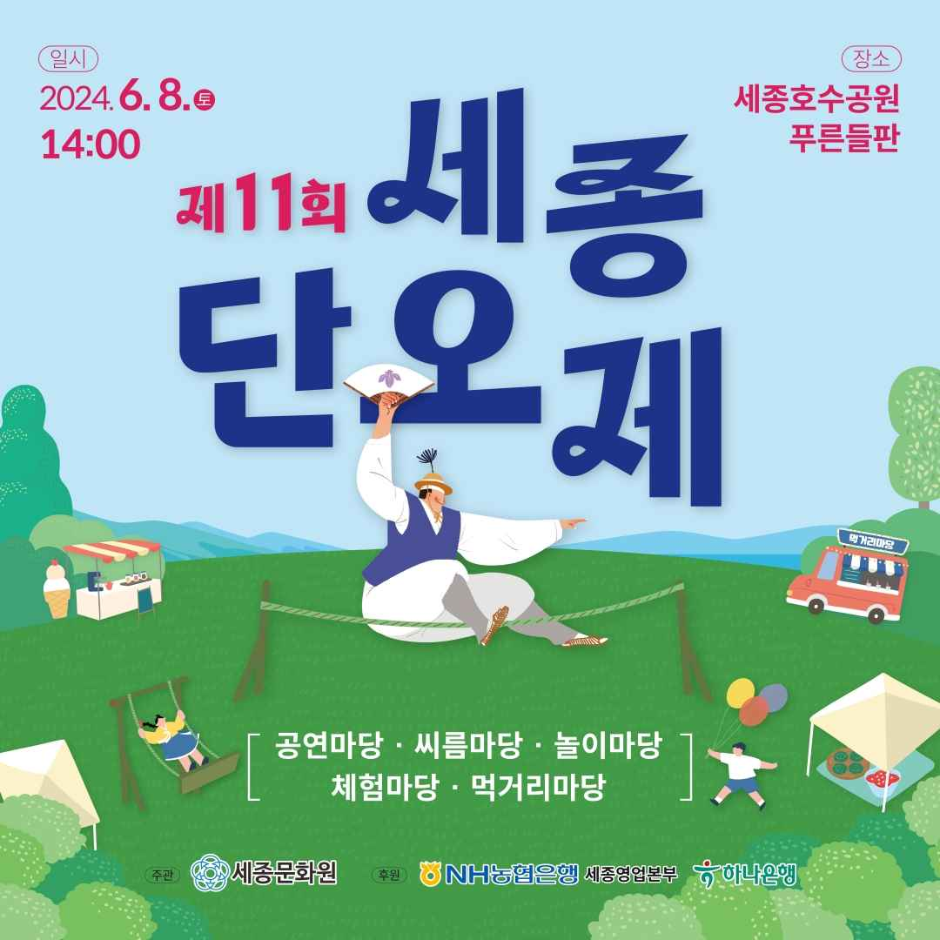Sejong National Arboretum (국립세종수목원)
19.2Km 2025-05-20
136, Sumogwon-ro, Sejong-si
+82-44-251-0001
The Sejong National Arboretum, which is about to open as the first urban arboretum in Korea, was built on an area of 65 ha adjacent to the Sejong Government Complex, where several government ministries are located. It is possible to see 2,834 species of 1.72 million plants (including 45,958 trees) under various themes such as the nation's largest four-season greenhouse, traditional Korean garden, Cheongryujiwon for study, and bonsai garden. It is another national arboretum established following the Baekdudaegan National Arboretum following the National Arboretum Expansion Plan for conserving and developing genetic tree resources by climate and vegetation zone.
Myeongrjaegotaek (논산 명재고택)
19.2Km 2024-12-23
50 , Noseongsanseong-gil, Nonsan-si, Chungcheongnam-do
+82-41-735-1215
Myeongjae Old House in Nonsan, Chungcheonbuk-do, was the house of Yun Jeung, a Joseon scholar of King Sukjong’s time. The house stands open to the village without a tall gate or fence, and consists of a sarangchae (men’s house) and gotganchae (storehouse) arranged protectively around the anchae (women’s house). The sarangchae has three guest rooms and a porch offering scenic views. Bathrooms and toilets are modern and clean. There is a thatched outbuilding with sound equipment and a beam projector for meetings. Cultural experience programs offered include traditional Korean music, a tea ceremony, and natural dyeing.
Sejong Lake Park (세종호수공원 일원)
19.3Km 2025-05-20
155, Hosugongwon-gil, Sejong-si
+84-44-301-3926
Sejong Lake Park is a large scale man-made park and is one of the major tourism destinations in Sejong-si. On weekends, the area is packed with visitors who come to relax and enjoy performances, festivals and cultural events.
Sejong Festival (세종축제)
19.3Km 2025-07-11
155 Hosugongwon-gil, Sejong-si
+82-44-850-0592
The Sejong Festival celebrates the many achievements of King Sejong, including the creation of Hangeul, many scientific projects, and environmental protection. Visitors can enjoy a range of programs, from an air show by the Korean Black Eagles to a science playground, and more.
Donamseowon Confucian Academy [UNESCO World Heritage] (돈암서원 [유네스코 세계문화유산])
19.5Km 2021-06-22
26-14, Im 3-gil, Nonsan-si, Chungcheongnam-do
+82-41-736-0096
Donamseowon Confucian Academy was built in 1634, originally 1.5 kilometers away from its current location. It received a royal charter in 1660 and relocated to its current location in 1880 due to flooding problems. The academy's main gate, Ipdeokmun Gate, is made up of three entrance doors. Once inside, Yangseongdang Hall can be seen facing the main gate, with Eungdodang Hall to the left. Ancestral rites take place every February and August at Jungjeong Hall. Inside the academy is a shrine that houses the ancestral tablets of four prominent scholars who taught at this institution - Kim Jang-saeng, Kim jip, Song Jun-gil, and Song Si-yeol. Among the academies that served Kim Jang-saeng and his teachings, Donamseowon is considered the most important and influencial.
Lotte Himart - Sejong Branch [Tax Refund Shop] (롯데하이마트 세종점)
19.6Km 2025-05-20
363, Galmae-ro, Sejong-si
-
Sejong Dano Festival (세종단오제)
19.6Km 2025-05-20
216 Dasom-ro, Sejong-si
+82-44-865-2411
The Sejong Dano Festival celebrates the fifth day of the fifth month according to the lunar calendar, and is an important day in traditional Korean culture. The festival provides the perfect environment to learn more about traditional Korean culture for both international visitors and the younger Korean generations.
Presidential Archives (대통령기록전시관)
19.8Km 2025-05-20
250 Dasom-ro, Sejong-si
The Presidential Archives offers an immersive journey through modern Korean history with documents, photos, and videos of South Korea's past presidents. It includes an exhibition hall, a children’s experience hall, and a video theater. The president’s office and reception room have been faithfully recreated, and displays include diplomatic gifts, souvenirs, and official vehicles used by past presidents. Children can engage in fun activities like becoming a president, creating election posters and participating in voting simulations.
Cheongnamdae Presidential Villa (청남대)
19.9Km 2023-04-13
646, Cheongnamdae-gil, Sangdang-gu, Cheongju-si, Chungcheongbuk-do
+82-43-257-5080
Cheongnamdae, which means "Cheong Wa Dae in a warm southern land," was once a private villa used by former presidents of Korea. Cheongnamdae became open to the public on April 18, 2003. It is located near Daecheong Dam in Cheongwon-gu, Chungcheongbuk-do and was built in 1983. The total area spans 1,825,000m² and consists of a main building, golf range, heliport, and fishing area. The natural environment surrounding the area has been well preserved, serving as a home to wildlife, including over 143 species of wild flowers and 124 species of trees as well as several endangered species.
Geumgang Lohas Daecheong Park (금강로하스대청공원)
19.9Km 2024-02-15
607 Daecheong-ro, Daedeok-gu, Daejeon
Geumgang Lohas Daecheong Park is situated near the Geumgang River and Daechung Dam. It borders Daecheongho Lake and the Geumgang River, featuring a waterfront deck where visitors can observe various bird species such as herons and the Red Leaf Willow habitat. The park also includes the Daecheong Culture Exhibition Hall, a lawn area, a Rock Garden, a Metasequoia Forest Park, and a children's forest playground.



![Lotte Himart - Sejong Branch [Tax Refund Shop] (롯데하이마트 세종점)](http://tong.visitkorea.or.kr/cms/resource/79/2883179_image2_1.jpg)

 English
English
 한국어
한국어 日本語
日本語 中文(简体)
中文(简体) Deutsch
Deutsch Français
Français Español
Español Русский
Русский